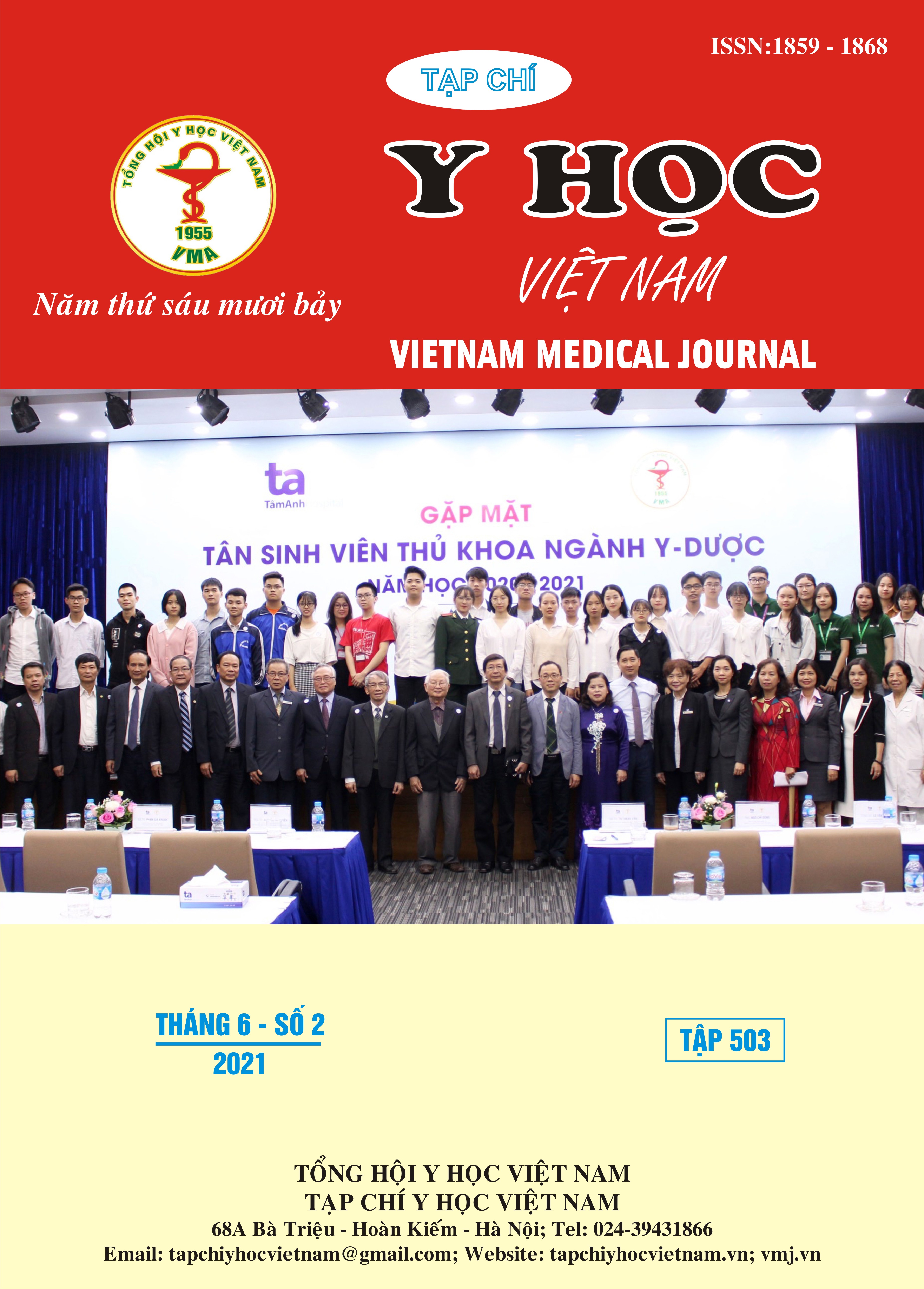ASSOCIATION BETWEEN LEFT VENTRICULAR MYOCARDIAL DEFORMATION ASSESSED USING THREE DIMENSIONAL SPECKLE TRACKING ECHOCARDIOGARPHY AND EJECTION FRACTION IN HEART FAILURE
Main Article Content
Abstract
Objective: to evaluate the correlation between deformation parameters on 3D speckle tracking echocardiography (STE) with left ventricular ejection fraction (EF) in patients with chronic heart failure. Subjects and methods: a prospective, cross-sectional study with was performed on 110 chronic heart failure patients treated at Department of Cardiology, 108 Central Hospital from january 2018 to october 2020. Results: There was a strong positive correlation between deformation parameters and left ventricular ejection fraction EF (r=0.67 for GLS; r=0.80 for GRS, r=0.80 for GCS; r=0.83 for GAS with p < 0,001). The strong correlation was more pronounced in the heart failure group with reduce EF compared to that of preserved EF (GLS r= 0.62 vs r=0,30, GRS r=0.74 vs r=0.55; GCS r=0.75 vs r=0.63; GAS r= 0.77 vs r=0.67). The parameters of left ventricular deformatoin are positively correlated with EF measured on 3D stronger than with EF measured on 2D (GLS r= 0.76 vs r=0.67; GRS r= 0.93 vs r=0.80; GCS r=0.92 vs r=0.80; GAS r=0.94 vs r=0.83). Conclusion: Left ventricular deformation parameters are closely correlated with EF, GAS has the strongest correlation. The correlation is stronger in the reduced EF group compared to preserved EF and better by 3D echocardiography compared to 2D.
Article Details
Keywords
3D echocardiography, left ventricular deformation, heart failure
References
2. Cikes, M. and S.D. Solomon, Beyond ejection fraction: an integrative approach for assessment of cardiac structure and function in heart failure. European heart journal, 2016. 37(21): p. 1642-1650.
3. Muraru, D., et al., Three-dimensional speckle-tracking echocardiography: benefits and limitations of integrating myocardial mechanics with three-dimensional imaging. Cardiovascular diagnosis and therapy, 2018. 8(1): p. 101.
4. Ponikowski, P., et al., 2016 ESC Guidelines for the diagnosis and treatment of acute and chronic heart failure: The Task Force for the diagnosis and treatment of acute and chronic heart failure of the European Society of Cardiology (ESC)Developed with the special contribution of the Heart Failure Association (HFA) of the ESC. European Heart Journal, 2016. 37(27): p. 2129-2200.
5. Figueroa, M.S. and J.I. Peters, Congestive heart failure: diagnosis, pathophysiology, therapy, and implications for respiratory care. Respiratory care, 2006. 51(4): p. 403-412.
6. Kleijn, S.A., et al., Comparison between three-dimensional speckle-tracking echocardiography and cardiac magnetic resonance imaging for quantification of left ventricular volumes and function. European Heart Journal–Cardiovascular Imaging, 2012. 13(10): p. 834-839.
7. Luis, S.A., et al., Use of three-dimensional speckle-tracking echocardiography for quantitative assessment of global left ventricular function: a comparative study to three-dimensional echocardiography. J Am Soc Echocardiogr, 2014. 27(3): p. 285-91.
8. Streeter Jr, D.D., et al., Fiber orientation in the canine left ventricle during diastole and systole. Circulation research, 1969. 24(3): p. 339-347.
9. Matsumoto, K., et al., Contractile reserve assessed by three-dimensional global circumferential strain as a predictor of cardiovascular events in patients with idiopathic dilated cardiomyopathy. Journal of the American Society of Echocardiography, 2012. 25(12): p. 1299-1308.


